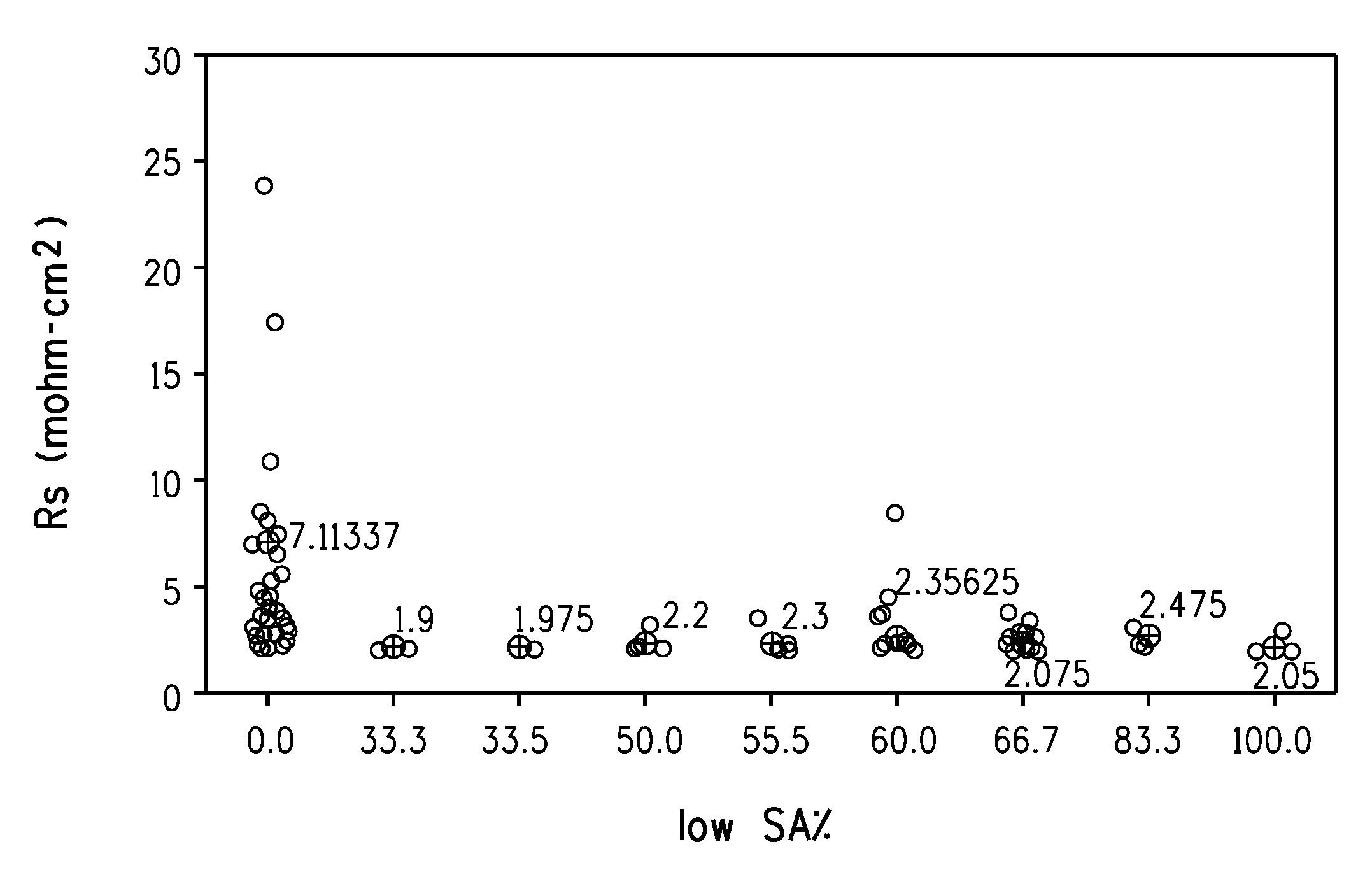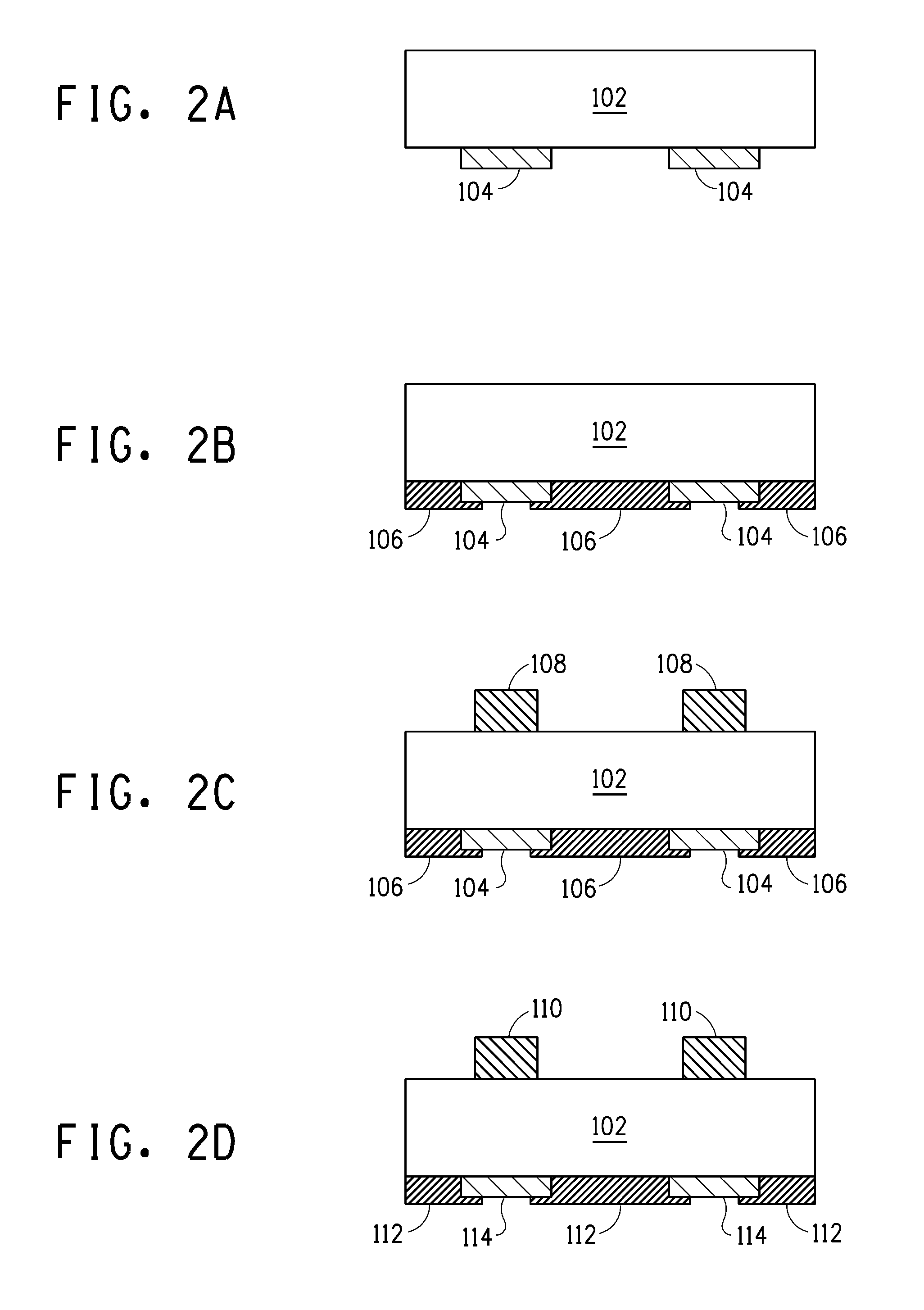Electrode paste for solar cell and solar cell electrode using the paste
- Summary
- Abstract
- Description
- Claims
- Application Information
AI Technical Summary
Benefits of technology
Problems solved by technology
Method used
Image
Examples
examples
1. Preparation of Electrically Conductive Paste
[0045]A mixture was prepared containing silver particles (mean particle diameter: 2.5 microns), Si·B·O-based glass frit (softening point: 540° C.), zinc oxide powder having a specific surface area of 0.4 m2 / g and an additive in the form of a sintering assistant. A resin binder in the form of a terpineol solution containing 20% by weight of ethyl cellulose was added to this mixture. Moreover, a thinner in the form of terpineol was added to adjust viscosity.
[0046]After pre-mixing this mixture with a universal mixer, the pre-mixed mixture was kneaded with a 3-roll kneader to obtain a paste for a solar cell electrode.
examples 1 to 3
2. Examples 1 to 3 and Comparative Examples 1 and 2
[0047]Electrically conductive pastes of Examples 1 to 3 and Comparative Examples 1 and 2 were prepared according to the electrically conductive paste preparation method described above. The amounts of each component used and the specific surface areas of the zinc oxide particles are shown in Table 1.
[0048]
TABLE 1ComparativeComparativeExample 1Example 2Example 3Example 1Example 2SilverMean particle2.502.502.502.502.50diameter (μm)Wt %82.277.681.481.382.6Zinc oxideSpecific surface3.00.470 and 10070.09.0area (m2 / g)and 3.0Wt %4.42.88.04.44.4Low specific100.0100.033.4100.0100.0SA ZnO wt % vs.total ZnOGlass fritWt %2.52.52.52.52.5Organic vehicleWt %7.07.06.07.07.0AdditiveWt %0.50.50.50.50.5ThinnerWt %3.49.61.64.33.0
3. Production of Solar Cells
[0049]Solar cells were produced using the resulting electrically conductive pastes. First, an Si substrate was prepared. An electrically conductive paste (silver paste) for soldering connections was ...
PUM
| Property | Measurement | Unit |
|---|---|---|
| Percent by mass | aaaaa | aaaaa |
| Specific surface area | aaaaa | aaaaa |
| Specific surface area | aaaaa | aaaaa |
Abstract
Description
Claims
Application Information
 Login to View More
Login to View More - R&D
- Intellectual Property
- Life Sciences
- Materials
- Tech Scout
- Unparalleled Data Quality
- Higher Quality Content
- 60% Fewer Hallucinations
Browse by: Latest US Patents, China's latest patents, Technical Efficacy Thesaurus, Application Domain, Technology Topic, Popular Technical Reports.
© 2025 PatSnap. All rights reserved.Legal|Privacy policy|Modern Slavery Act Transparency Statement|Sitemap|About US| Contact US: help@patsnap.com



